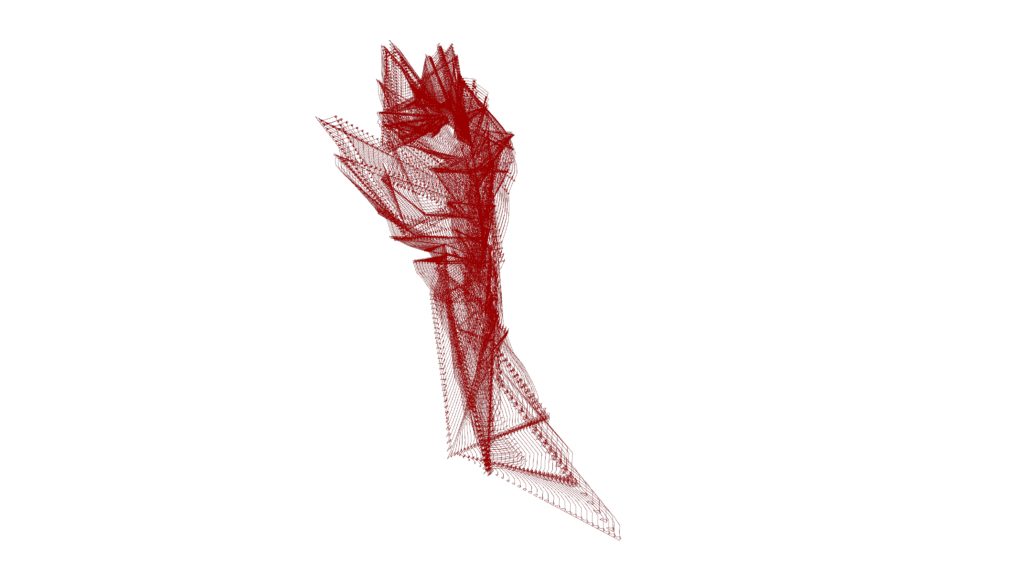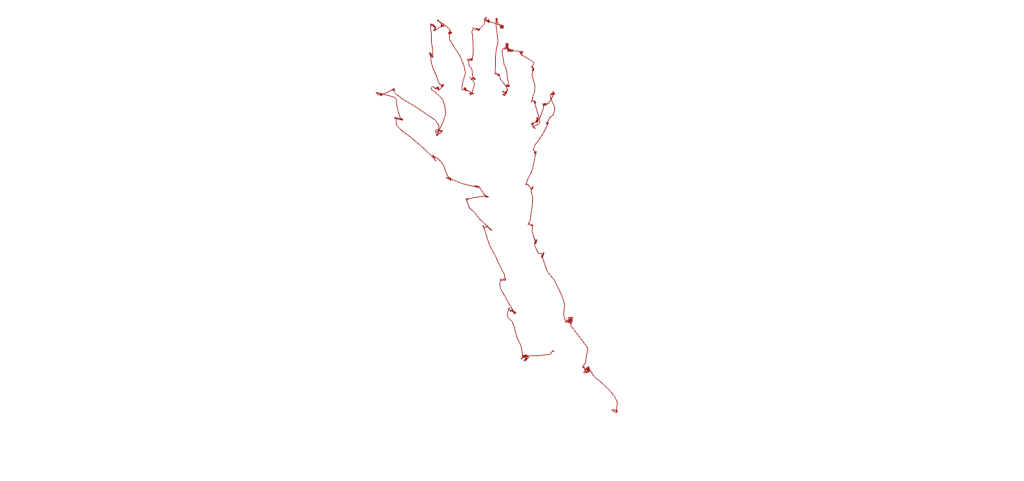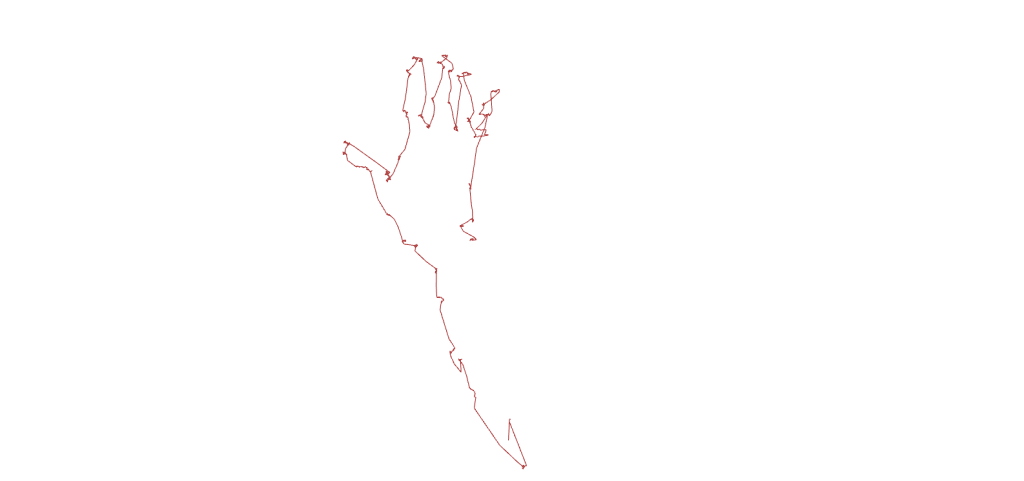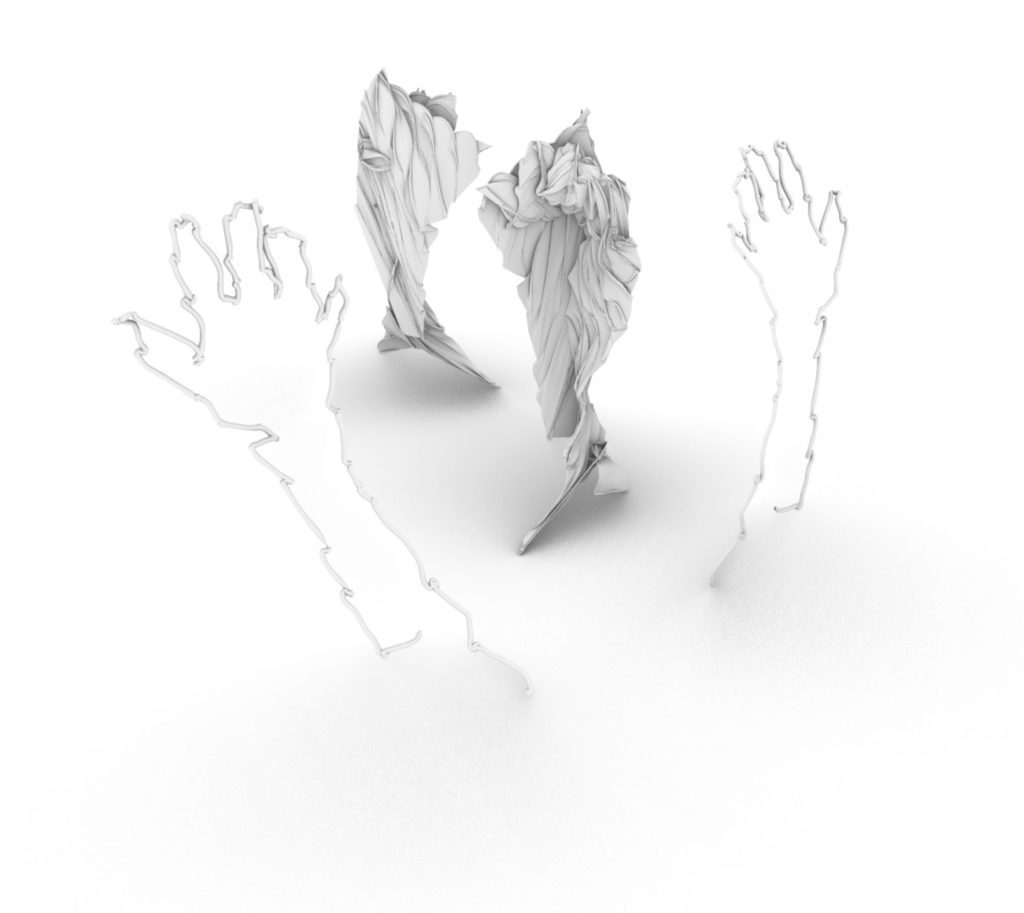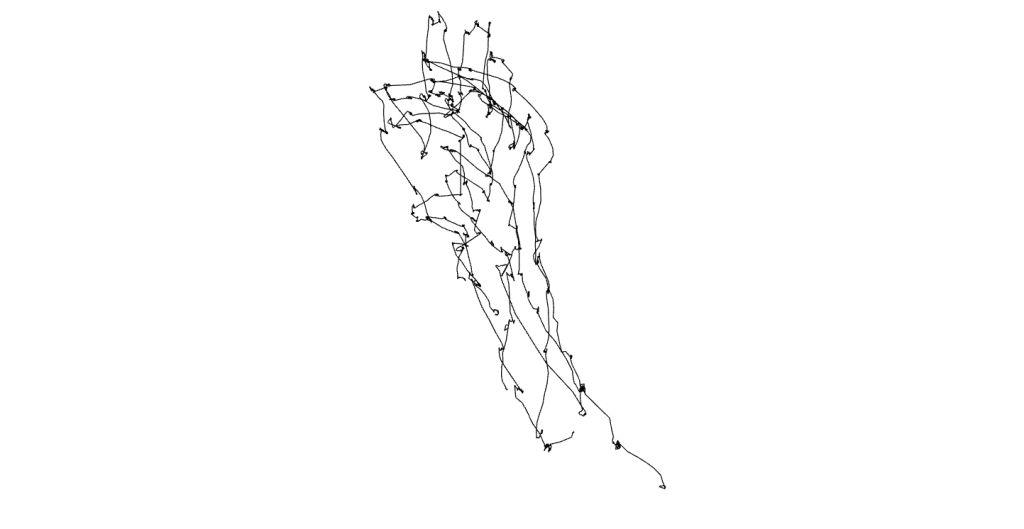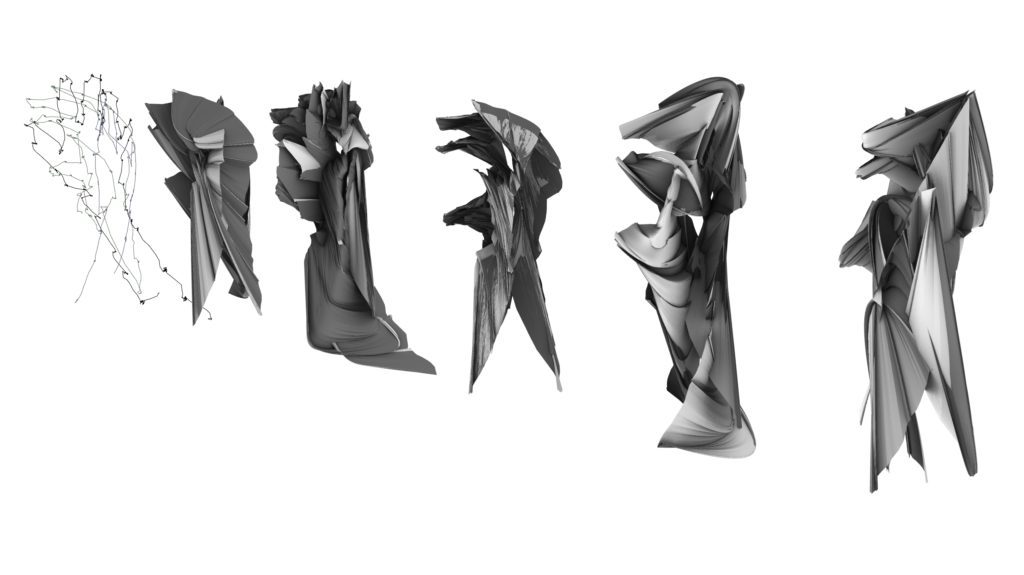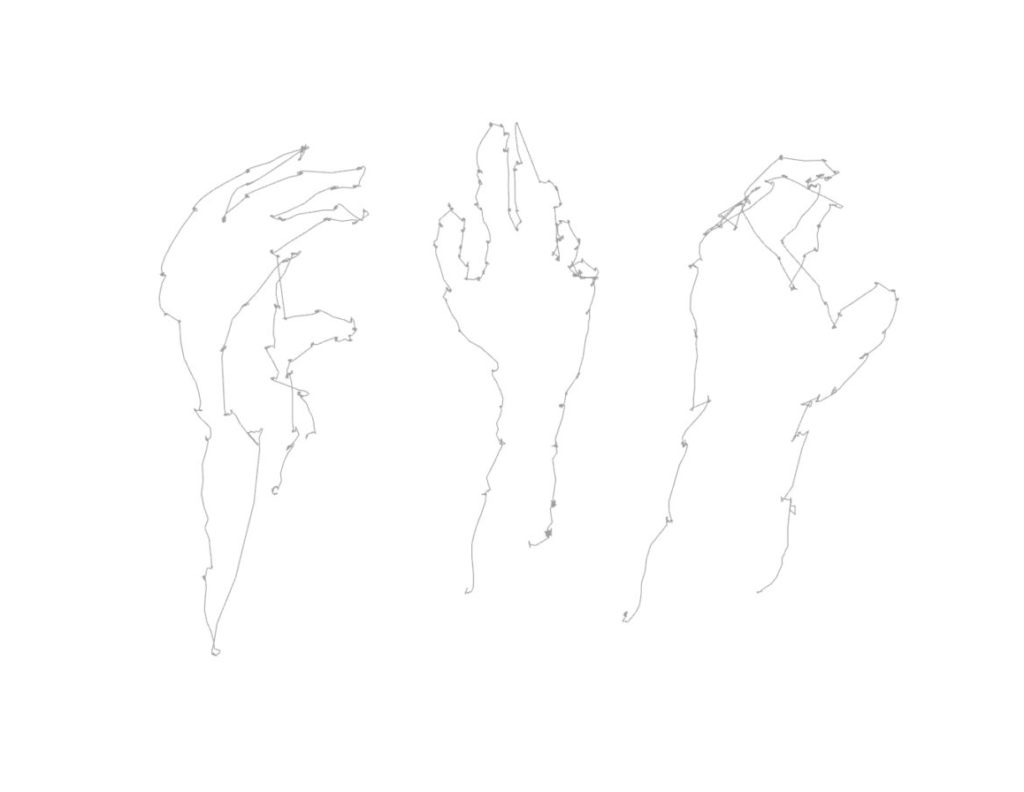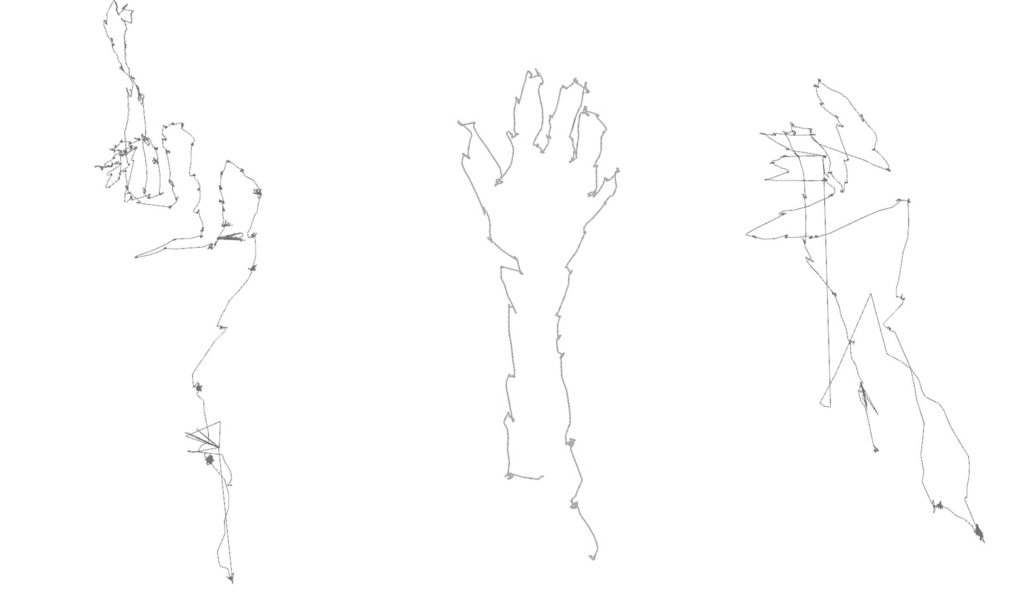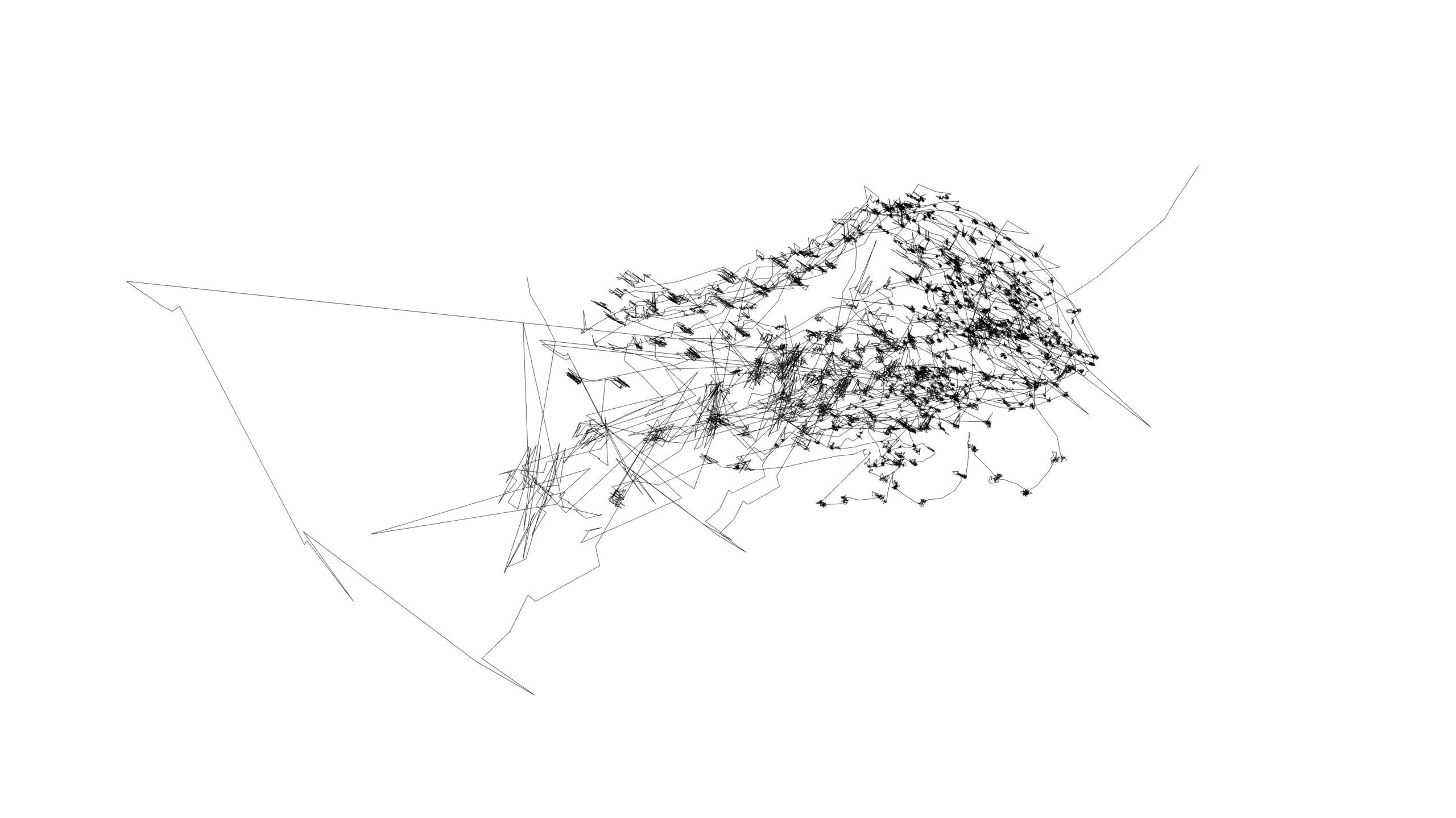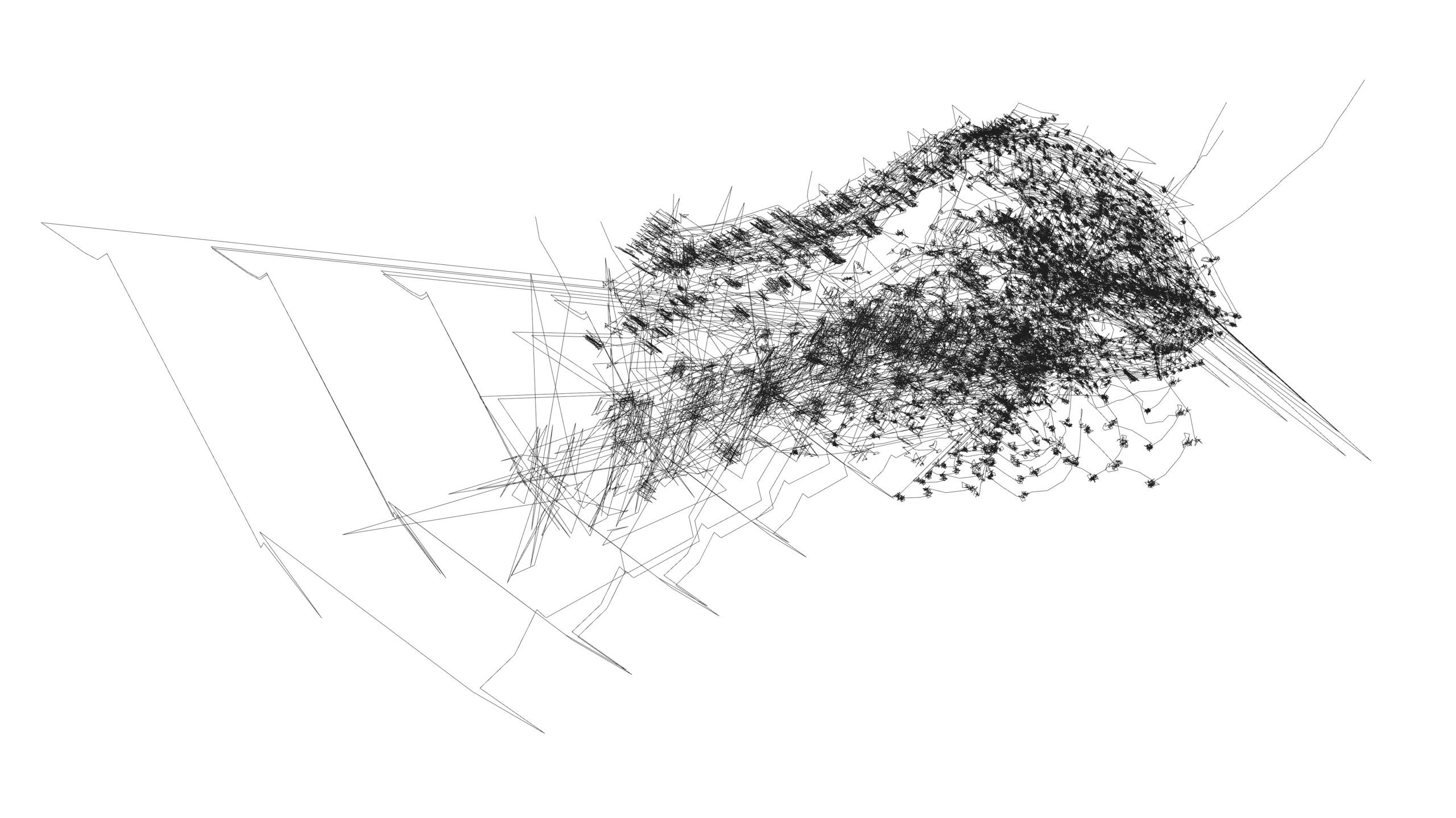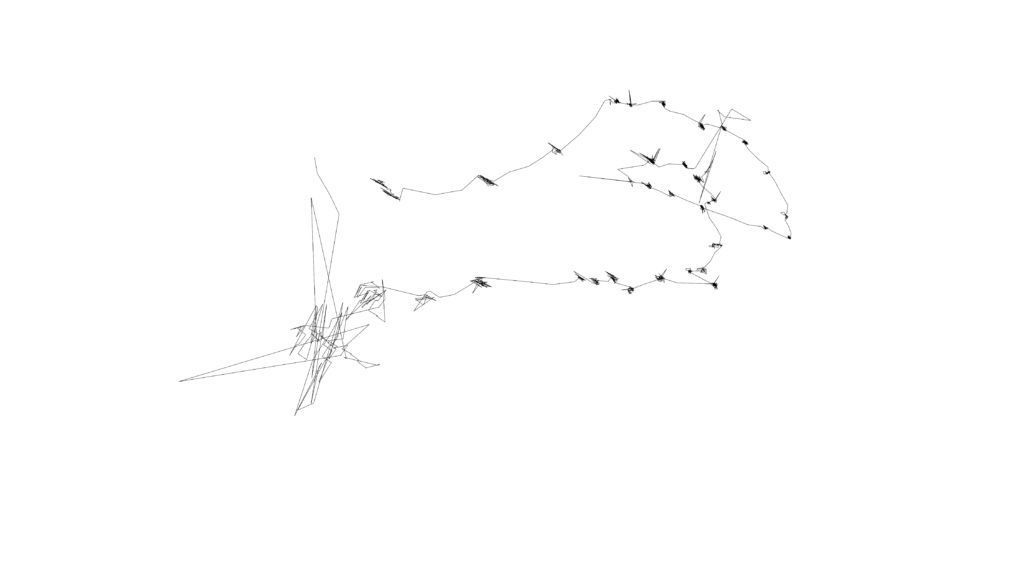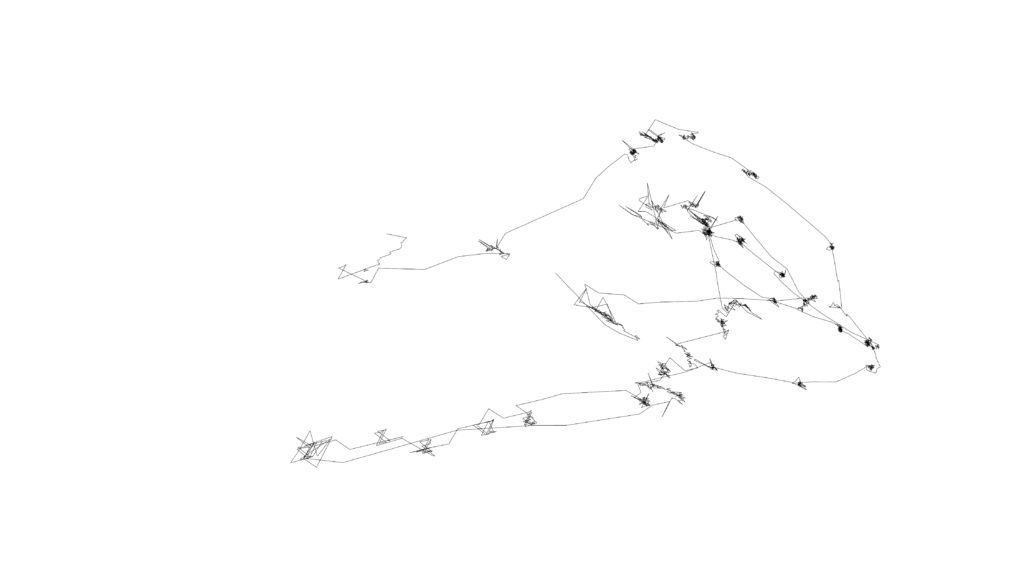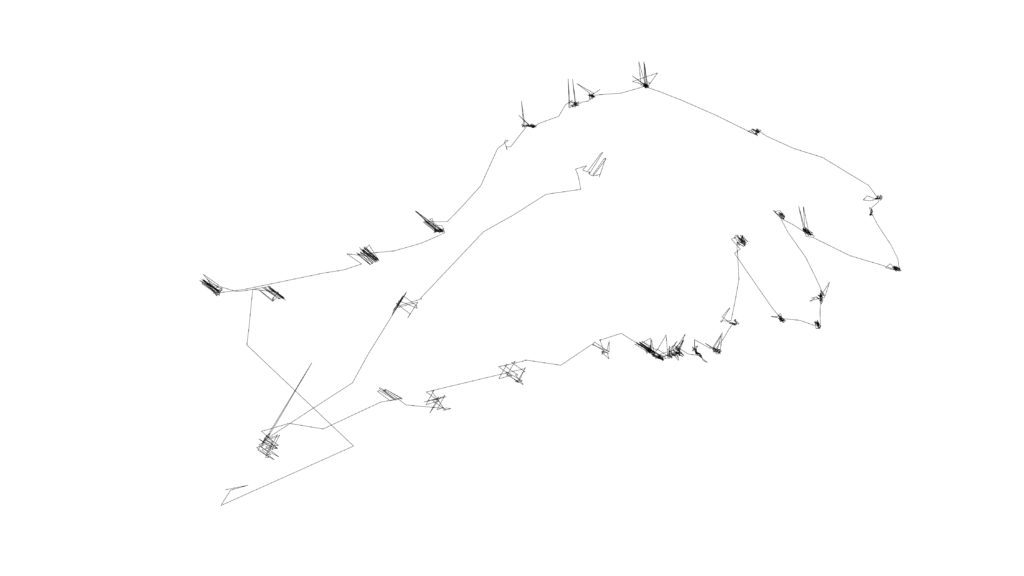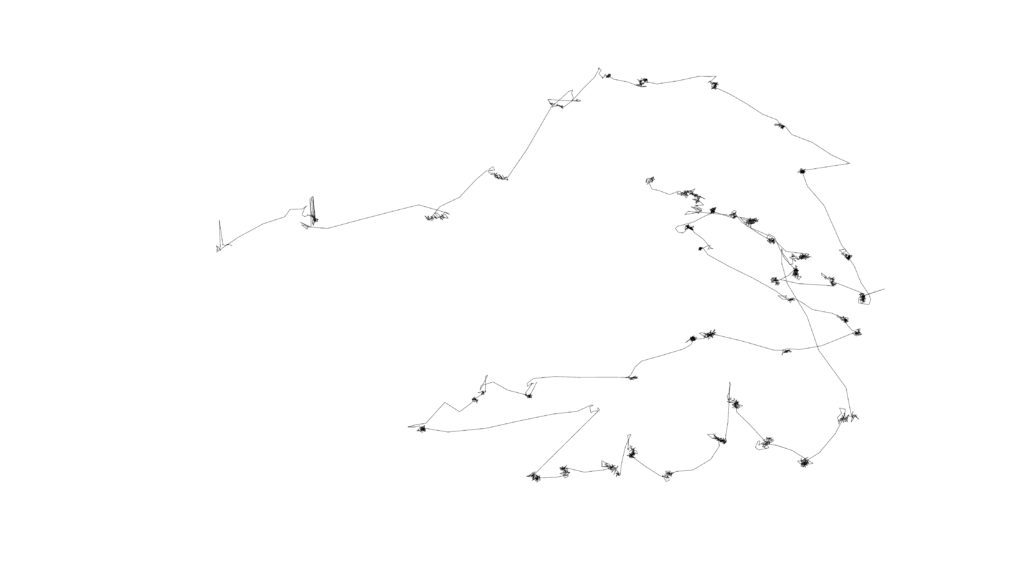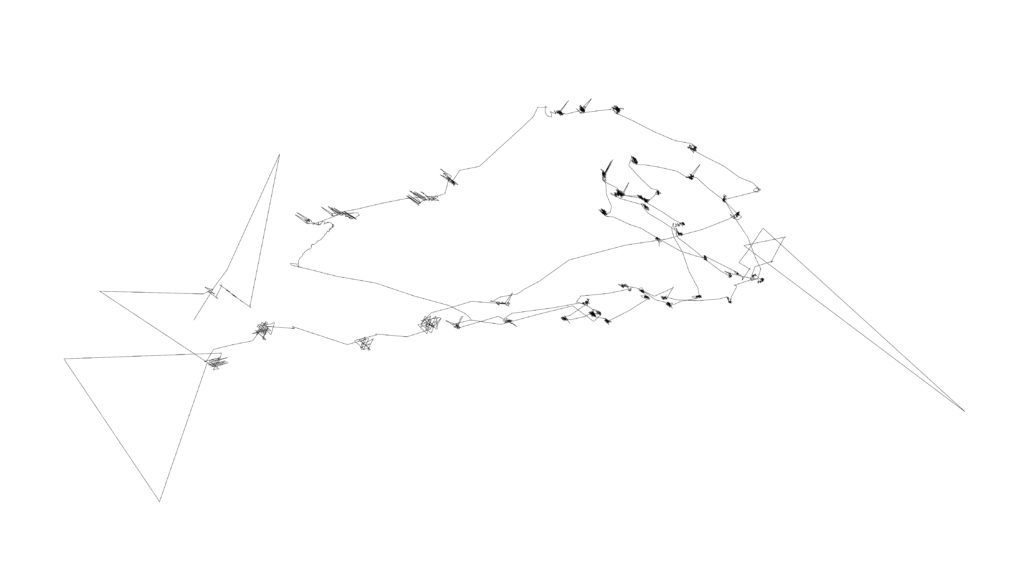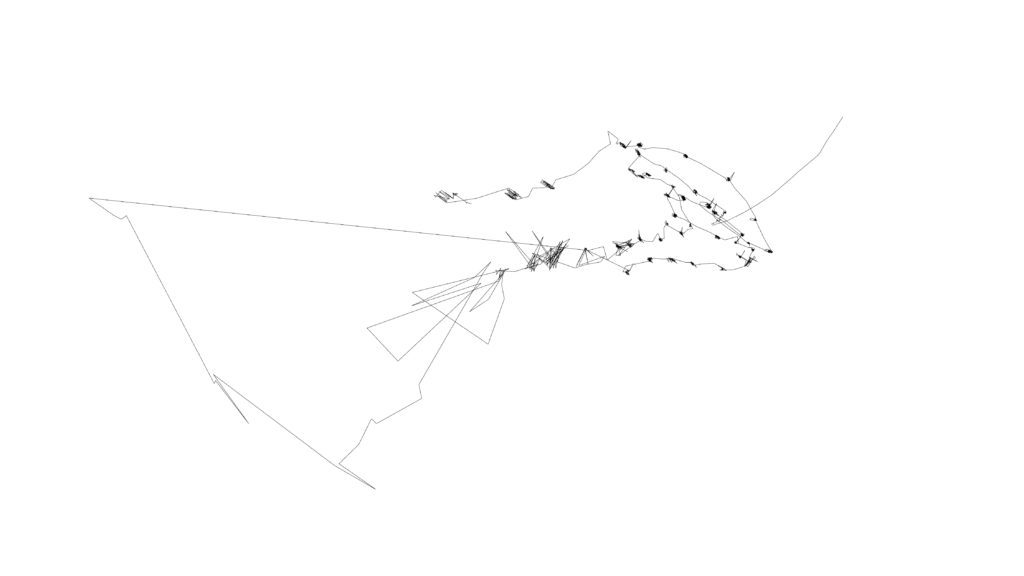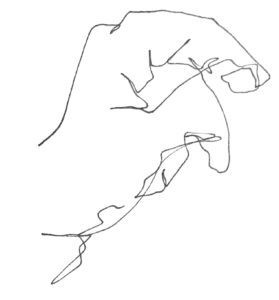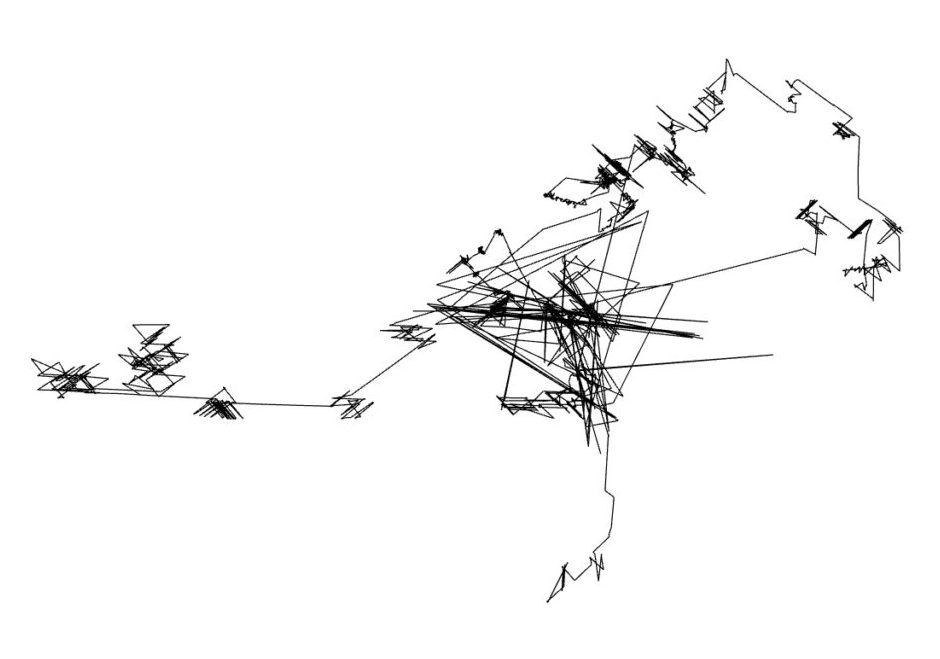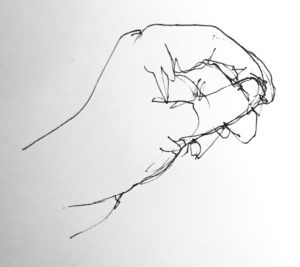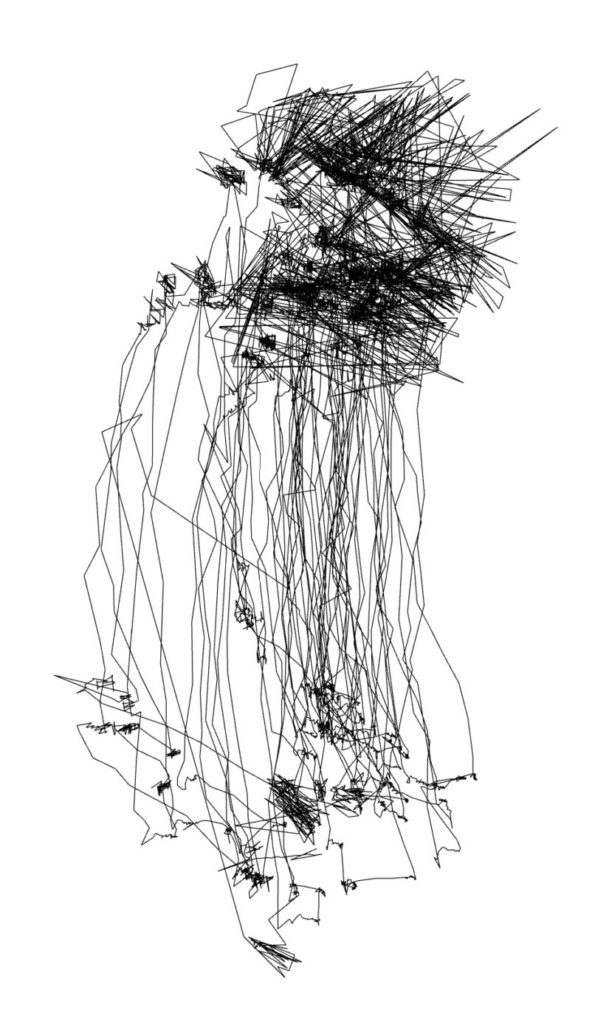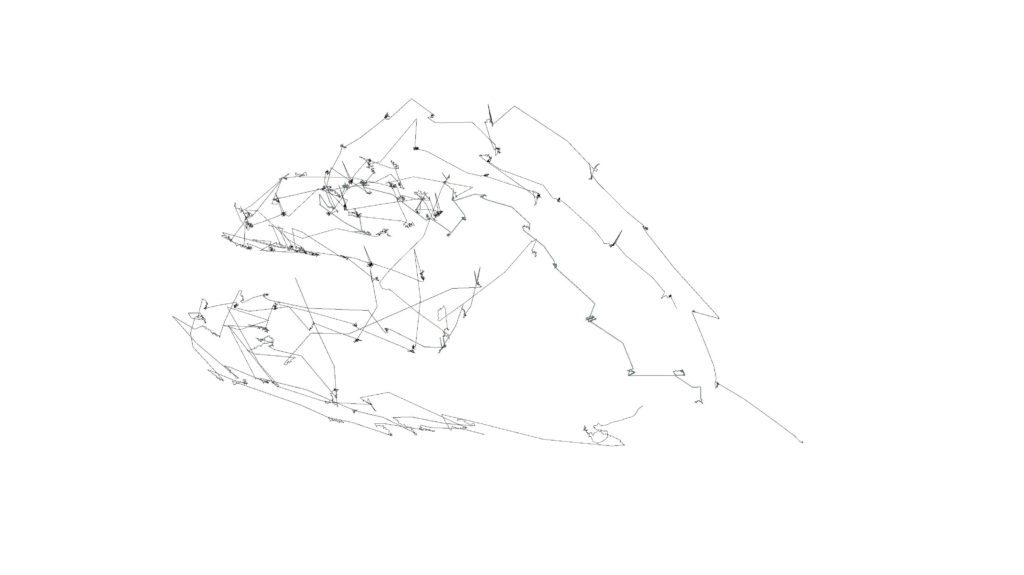
Figure 22: 5 superimposed eye-drawings of my right hand
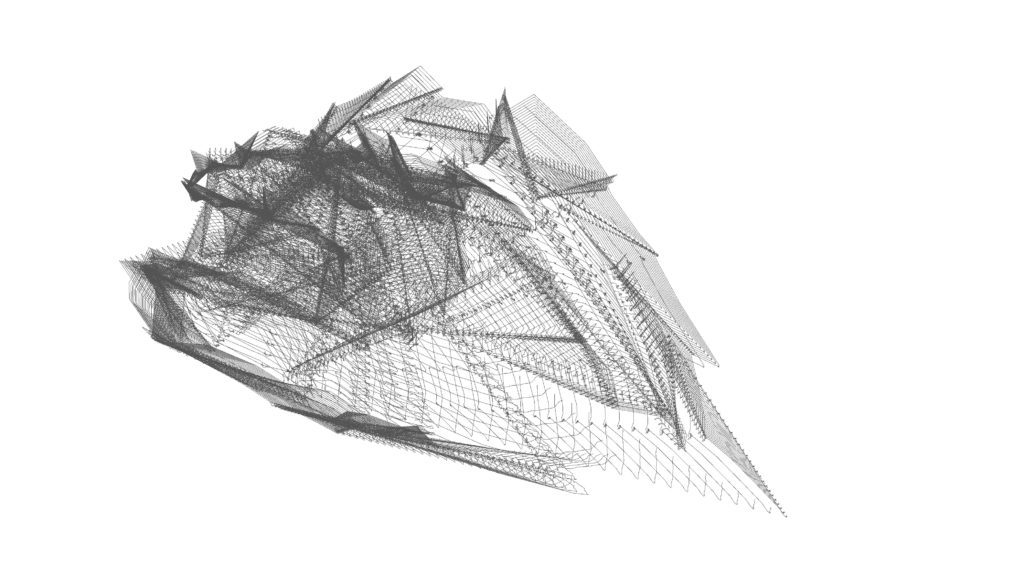
Figure 23: Generative development of 30 tween curves between the 5 eye-drawings in Figure 22
What universe of drawing does the practice of eye drawing really fall under? I feel that the performative element while eye-drawing my chosen subject matter is embedded into my previous knowledge of drawing. I seem to automatically adapt certain methodologies which are comparable to techniques that have a long history in drawing (and which I should both highlight and challenge). A primary example is the intention of attempting to ‘contour’ along the subject being looked at and to present them as such (as in Figure 22).
At the same time, the adaptation of the eye-tracker into a drawing medium is in itself allowing me to question several acts of looking while drawing, and by choosing the hand (and body) as subject matter, the practice is being given a specific context. Therefore, during the act of eye drawing and during my first reactions to the data processing, the general mood is that of drawing ‘as drawing’.
However, examples like Figure 22 contain more information other than the eye-drawn contours. Within the virtual space, they exist as 5 individual curves in a three-dimensional field constituting in several possible viewpoints (Figure 22 is closest to a conventional drawing result). Each curve (eye-drawing) consists in a set of time-based coordinates, along with several other data provided by the eye-tracker.
The mood of drawing ‘as drawing’ starts to fade within this context and Figure 23 is essentially a product of this condition. It becomes a computer-assisted drawing, or a computer-generative drawing. In Figure 23, the curves stop being referred to as eye-drawings and become information for a set of instructions — specifically, 30 tween curves in the space between every 2 curves (eye-drawings). In this scenario, the eye-drawings become data/information which guide the algorithm in order to create the instructed tween curves. The generation of the tween curves is generative and I therefore do not have full control on its appearance. However, I can vary several inputs like; the number of tween curves, viewpoint of the exported image, distance between curves (eye-drawings) and positioning of the latter within the virtual space, among other options (which I will continue to explore through the practice). The linear form of the eye-drawings, are themselves the primary influence for results such as Figure 23.
